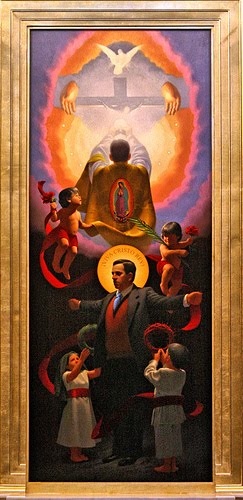Secular news headlines are ablaze with Phoenix Bishop Thomas Olmsted confirming the excommunication of Sr. Margaret McBride, a hospital executive, for procuring an abortion for a 27-year old woman with pulmonary hypertension who was 11 weeks pregnant. Sr. McBride cited the high mortality rate of mothers coming to term with this condition as her rationale.
Understanding this situation is a very difficult scenario, well above my "pay grade”, I would at least like to offer some bullet points for your consideration and further the discussion before we automatically demonize the Bishop and praise Sr. McBride.
1) Years back the maternal mortality rate of carrying a pregnancy to term with this condition was cited at 50%. More recently, it was then adjusted to 30%. An October 2005 article citing an 18 year survey actually cited 22%. I would ask each person who supports Sr. McBride’s decision an equally challenging question. At what mortality rate does the unborn child merit consideration and an abortion would be considered wrong?
2) How ‘bout 11%...? A research report by 13 doctors published in the International Journal of Obstetrics & Gynaecology (April 2010) cites a medical study where treating pregnant women who have PH with an early introduction of targeted pulmonary vascular therapy and early planned delivery under regional anesthesia had all the women in the study survive as well as their babies -- with the exception of one woman who chose to stop the treatment after childbirth. At the 11% mortality rate of this study do we sign off on the death certificates as a foregone conclusion of the 89 babies out of 100 that would survive birth along with their mothers? Or do we start thinking about treating both patients?
3) Father John Ehrich, the Medical Ethics Director for the Diocese Phoenix defended the Church and bishop in writing, "The unborn child can never be thought of as a pathology or an illness…" "That is, the child is not that [condition] which threatens the life of the mother, rather it is the pathology or illness [pulmonary hypertension] which threatens the mother's life." So my question is did this “ethics” review done by Sr. McBride prior to approving this abortion approach this dilemma as the pregnancy was the danger, or the pulmonary hypertension was the danger? Reading between the lines is that for Fr. Ehrich to specifically mention this in his Diocesan defense could infer that when the Diocese reviewed the minutes and documentation from this decision, this might have been the case, otherwise why would Fr. Ehrich draw ample attention to this consideration?
4) It should be stated that the excommunication was established by Sr. McBride’s action in itself and not initiated by a formal declaration from the Bishop.
5) My final observation is that why would a Catholic nun not consult the local Magisterium on a decision like this? Did she think they had no authority for a Catholic hospital within their Diocese? Sr. McBride was quickly relocated in her position after her action, so the Diocese did have authority over the hospital. So obviously this is not the reason the Diocese was not consulted. In my secular world, I wouldn't never make a decision against my company's set guidelines without getting approval from the chain on command. One would question are these decisions such a commonplace thing in this hospital that the frequency of the decisions have diluted the need to consult the Diocese on every one? Something is not right. There is more here than what is told.
Saturday, May 29, 2010
Subscribe to:
Post Comments (Atom)


2 comments:
thank you - thank you. I was searching for an answer to the question - how life threatening was this condition. Nothing I found in other media addressed this issue.
Post a Comment